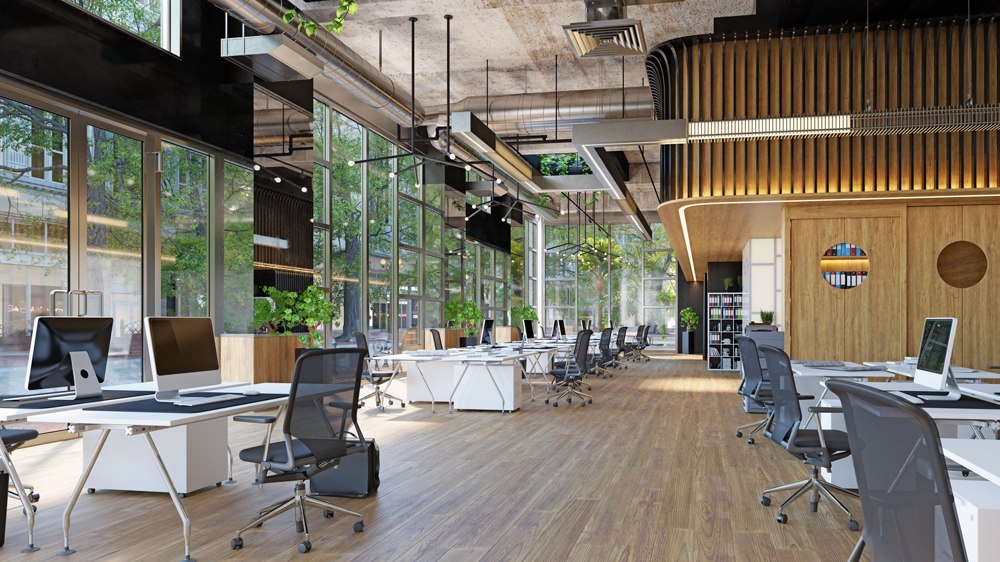In this article
Making light work of light work
LED has been lighting’s latest great leap forward in providing more efficient illumination in offices, warehouse and on the production floor. But despite their relatively long service life, now some LED fitments are beginning to fail. Which makes this the ideal time to consider a new form of lighting which can help to improve employees’ wellbeing, and make them more productive. And acting now could keep you one step ahead of legislation.

Circadian lighting is designed to work with the human brain’s body clock, known as the circadian rhythm. Before the Industrial Revolution, our working day was effectively dictated by the sun, and our brains are still most comfortable and efficient if they can follow roughly that pattern.
That’s why jet-lag makes us feel so lousy. The light entering our eyes is telling us one thing, but our body – because it has not yet adjusted to being in a different time zone – is telling us another, and makes us want to sleep when we need to be awake.
Fortunately for us all, the working day doesn’t disrupt the circadian rhythm as much as jet-lag does. But it can make it drift away from its optimum. This is especially true the more the working environment’s lighting conditions differ from the natural world.
So in a large warehouse with no natural light, workers won’t have the natural passage of daylight to influence their circadian rhythm. Even in an office, with artificial lighting that’s constantly the same wavelength, intensity and brightness, there won’t be enough visual stimulus from natural light to keep its occupants’ circadian rhythm on track.
That’s why regulators are beginning to consider updating their workplace lighting guidance. And now technology has come up with a solution.
Your light, your way
Lighting designers and installers used to think about lighting spaces. With circadian lighting, illumination lights people. In other words, circadian lighting is designed to provide light tailored to the individual, the task they are doing, and the level of natural light in their working environment.
The aim is to replicate the effect of nature in the workplace, with lighting which changes by the hour and by the season. Ultimately, individuals should be able to tailor the lighting to suit their own personal situation, which can be affected by age, eyesight and other factors.
Of course circadian lighting won’t mimic natural light entirely, or warehouse workers would stop work at 4pm in winter and office workers would be logging-on to their PCs at 4am in summer. But it can help people to feel more alert, increase feelings of wellbeing, and be more productive. More controllable lighting can also be more energy-efficient – helping to reduce energy costs and shrink a building’s carbon footprint.
Shining a light on legislation
Current regulations concerning workplace lighting don’t mention circadian lighting. The Workplace (Health, Safety & Welfare) Regulations are concerned with ‘adequate’ lighting for health and safety, based on an average person of average working age, with average eyesight. This leads to illumination that makes an area bright enough to work safely, rather than light which increases alertness or helps mood and wellbeing.
However the regulations are currently under review, and any new version could include stipulations about controllable, human-centric lighting.
So if your LED fitments are due an overhaul, now is the time to talk to ERIKS – who have the know-how and expert partners to throw useful light on the subject.

In the dark?
Why is the circadian rhythm so important for wellbeing, happiness – and productivity?
Essentially, the circadian rhythm is your 24-hour body clock. Controlled by the hypothalamus region of your brain, it dictates when you feel at your most alert, when you feel at your most tired, when you sleep and when you wake up.
Unlike, for example, a central heating clock, it can’t be set manually, but its operation is dictated by the amount and wavelength of light entering your eyes. This triggers your hypothalamus to release melatonin – and melatonin levels within your brain control your sleeping and waking patterns.
Managing the lighting environment will manage your circadian rhythm, and therefore how you feel, how and when you sleep, and how and when you work best.
For more information on Safety Solutions and to get in touch with one of our ERIKS Specialists, please contact your local ERIKS Service Centre, who will be happy to discuss your options.
#ERIKS #LetsMakeIndustryWorkBetter #Lights #Efficiency #Innovation

